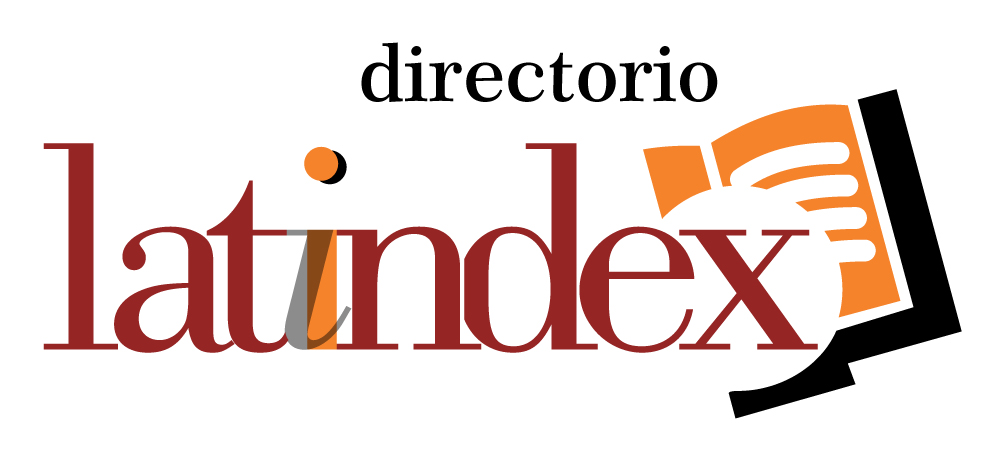Mejoría Clínica de Pacientes Operados de Cadera por Pinzamiento Femoroacetabular Mediante Artroscopia en el Centro Médico Naval
Resumen
Objetivo: El objetivo de este estudio es determinar si los pacientes que se someten a artroscopía de cadera por diagnóstico de pinzamiento femoroacetabular experimentan un cambio estadísticamente significativo al comprar su funcionalidad en actividades de la vida diaria, deportivas y en general antes y después de una cirugía de artroscopia. Métodos: Se analizaron un total de 12 pacientes, obtenidos de los registros de pacientes intervenidos por artroscopia de cadera entre los años 2015 y 2024, que contaran con evaluación preoperatoria y seguimiento postoperatorio mediante aplicación de encuestas de al menos 1 año con las subescalas actividades de la vida diaria (ADL) y actividades deportivas (SS) de la escala Hip Outcome Score (HOS), y la escala de funcionalidad modificada Harris Hip Score (mHHS). Resultados: Se analizaron 12 pacientes, de estos cinco fueron de sexo femenino (42%) y 7 masculino (58%), con una edad media de 46.5 ± 14.1años, con un índice de masa corporal de 26.25 ± 3.04 kg/m2, 17. Se analizaron, además, características propias indicativas del grado de actividad con relación al estatus de régimen civil o militar. En cuanto al ámbito militar se incluyeron diez pacientes (83%) y solo dos civiles (17%); por último, se consideró el tipo de pinzamiento de cadera más frecuente como indicación para realizar este procedimiento. El tipo más frecuente fue el tipo Cam con seis individuos (50%), seguido de Pincer con cuatro individuos (33%) y dos tuvieron un pinzamiento mixto (17%). Los pacientes experimetaron mejoria significativa posterior a cirugia artroscopica de cadera. Los pacientes experimetaron mejoria significativa para las escalas HOS-ADL, HOS-SS y MHHS ( P<0.005). MCID fue logrado en 83.3% de los pacientes para HOS-ADL, 91.6% para HOS-SS y 83.3% para MHHS. PASS fue logrado para el 41.6% para HOS-ADL, 41.6% para HOS-SS y 58% para MHHS.Conclusiones: Se observó que los pacientes luego de al menos 1 año de operados de artroscopia de cadera por pinzamiento femoroacetabular mejoraron considerablemente. El tratamiento artroscópico en los pacientes con diagnóstico de pinzamiento femoroacetabular es eficaz y seguro. Por lo que se recomienda realizar este procedimiento para todos aquellos pacientes que sean captados con este diagnóstico y así evitar las consecuencias limitantes que este padecimiento puede generar a largo plazo.
Descargas
Citas
Moore KL, Dalley AF, Agur AMR. *Anatomía con orientación clínica*. 8ª ed. Filadelfia: Lippincott Williams & Wilkins; 2014.
Snell RS. *Anatomía clínica*. 8ª ed. Filadelfia: Lippincott Williams & Wilkins; 2010.
Tortora GJ, Derrickson B. *Anatomía y fisiología*. 14ª ed. Hoboken: Wiley; 2014.
Kahn M. *Anatomía funcional del aparato locomotor*. 2ª ed. Barcelona: Masson; 2006.
Gray H, Standring S. *Gray's Anatomy: The Anatomical Basis of Clinical Practice*. 41ª ed. Londres: Churchill Livingstone; 2016.
Nötzold A., et al. Surgical outcomes of arthroscopies performed in patients with cam-type femoroacetabular impingement. *J Orthop Surg Res*. 2022;17(1):123.
Kothari A., et al. Femoroacetabular impingement causing hip pain in young adults: A literature review. *Clin Orthop Relat Res*. 2015;473(12):3865-3873.
López-Vidriero E., et al. Prevalence of radiographic data of femoroacetabular impingement in Mexican adults: A multicenter study. *Rev Mex Ortop Traumatol*. 2017;61(2):89-95.
Philippon M.J., et al. Arthroscopic treatment of femoroacetabular impingement: A review of the literature and report of our experience in patients with evident impingement. *Orthopedics*. 2008;31(6):589-594.
Domb B.G., et al. The role of hip arthroscopy in the treatment of femoroacetabular impingement: Current concepts and future directions. *Orthop Clin North Am*. 2015;46(3):393-404.
Wylie J.D., et al. The effect of hip arthroscopy on pain and function in patients with femoroacetabular impingement: A systematic review and meta-analysis. *Am J Sports Med*. 2016;44(8):2179-2187.
Yuan BJ, Trousdale RT. Femoroacetabular impingement. The Young Adult Hip in Sport. 2014, 59-61.
Carton PF, Filan DJ. The clinical presentation, diagnosis and pathogenesis of symptomatic sports-related femoroacetabular impingement (SRFAI) in a consecutive series of 1021 athletic hips. Hip Int. 2019;29(6):665–73.
Bredella MA, Ulbrich EJ, Stoller DW, Anderson SE. Femoroacetabular impingement. Magn Reson Imaging Clin N Am. 2013;21(1):45–64.
Dwyer T, Whelan D, Shah PS, Ajrawat P, Hoit G, Chahal J. Operative versus nonoperative treatment of femoroacetabular impingement syndrome: A meta-analysis of short-term outcomes. Arthroscopy. 2020;36(1):263–73.
Morales-Avalos R, Tapia-Náñez A, Simental-Mendía M, Elizondo-Riojas G, Morcos-Sandino M, Tey-Pons M, et al. Prevalence of morphological variations associated with femoroacetabular impingement according to age and sex: A study of 1878 asymptomatic hips in nonprofessional athletes. Orthop J Sports Med. 2021;9(2):2325967120977892.
Krishnamoorthy VP, Kunze KN, Beck EC, Cancienne JM, O’Keefe LS, Ayeni OR, et al. Radiographic prevalence of symphysis pubis abnormalities and clinical outcomes in patients with femoroacetabular impingement syndrome. Am J Sports Med. 2019;47(6):1467–72.
Morales-Avalos R, Leyva-Villegas JI, Sánchez-Mejorada G, Reynaga-Obregón J, Galindo-de León S, Vílchez-Cavazos F, et al. Prevalence, topographic and morphometric features of femoral cam-type deformity: changes in relation to age and gender. Anat Sci Int [Internet]. 2015;91(4):391–7.
Dessouky R, Chhabra A, Zhang L, Gleason A, Chopra R, Chatzinoff Y, et al. Cam-type femoroacetabular impingement-correlations between alpha angle versus volumetric measurements and surgical findings. Eur Radiol [Internet]. 2019;29(7):3431–40.
Sutter R, Pfirrmann CWA. Update on femoroacetabular impingement: What is new, and how should we assess it? Semin Musculoskelet Radiol. 2017;21(5):518–
Youngman TR, Wagner KJ 3rd, Montanez B, Johnson BL, Wilson PL, Morris WZ, et al. The association of α angle on disease severity in adolescent femoroacetabular Impingement. J Pediatr Orthop [Internet]. 2021;41(2):88–92.
Rakhra KS, Sheikh AM, Allen D, Beaulé PE. Comparison of MRI alpha angle measurement planes in femoroacetabular impingement. Clin Orthop Relat Res. 2008;467(3):660–5.
Khan W, Khan M, Alradwan H, Williams R, Simunovic N, Ayeni OR. Utility of intra-articular hip injections for femoroacetabular impingement: A systematic review. Orthop J Sports Med [Internet]. 2015;3(9):2325967115601030.
Qiao H-Y, Zhang Y-H, Ren Y-M, Tian M-Q. Arthroscopic versus open treatment for femoroacetabular impingement: A systematic review and meta-analyses. Medicine (Baltimore). 2020;99(47):e23364.
Horneff JG, et al. History of arthroscopy: the evolution of a surgical technique. *J Knee Surg*. 2018;31(5):419-425.
Hwang JH, et al. Current status of hip arthroscopy: indications and outcomes. *Clin Orthop Relat Res*. 2020;478(6):1291-1301.
Ganz R, et al. The femoroacetabular impingement syndrome: an overview of the condition and its treatment options. *Orthop Clin North Am*. 2008;39(3):319-327.
Beck M, et al. Hip arthroscopy for labral tears: indications and outcomes. *Am J Sports Med*. 2016;44(2):487-493.
Rath E, Tsvieli O, Levy O. Hip arthroscopy: an emerging technique and indications. Isr Med Assoc J. 2012;14(3):170–4.
El-Sayed AMM. Treatment of early septic arthritis of the hip in children: comparison of results of open arthrotomy versus arthroscopic drainage. J Child Orthop.
Center for Drug Evaluation, Research. Investigator responsibilities — protecting the rights, safety, and welfare of study subjects. U.S. Food and Drug Administration. FDA; 2019 [cited 2024 Dec 1].
Kemp JL, Collins NJ, Makdissi M, Schache AG, Machotka Z, Crossley K. Hip arthroscopy for intra-articular pathology: a systematic review of outcomes with and without femoral osteoplasty. Br J Sports Med. 2011;46(9):632–43.
Lieberman JR, Dorey F, Shekelle P, Schumacher L, Thomas BJ, Kilgus DJ, et al. Differences between patients’ and physicians’ evaluations of outcome after total hip arthroplasty. J Bone Joint Surg Am. 1996;78(6):835–8.
Mokkink LB, Terwee CB, Patrick DL, Alonso J, Stratford PW, Knol DL, et al. The COSMIN checklist for assessing the methodological quality of studies on measurement properties of health status measurement instruments: an international Delphi study. Qual Life Res. 2010;19(4):539–49.
Roos EM. Outcome after anterior cruciate ligament reconstruction--a comparison of patients’ and surgeons’ assessments. Scand J Med Sci Sports. 2001;11(5):287–91.
Safran MR, Hariri S. Hip arthroscopy assessment tools and outcomes. Oper Tech Orthop. 2010;20(4):264–77.
Thorborg K, Hölmich P, Christensen R, Petersen J, Roos EM. The Copenhagen Hip and Groin Outcome Score (HAGOS): development and validation according to the COSMIN checklist. Br J Sports Med. 2011;45(6):478–91.
Tijssen M, van Cingel R, van Melick N, de Visser E. Patient-Reported Outcome questionnaires for hip arthroscopy: a systematic review of the psychometric evidence. BMC Musculoskelet Disord. 2011;12:117.
Nilsdotter A, Bremander A. Measures of hip function and symptoms: Harris hip score (HHS), hip disability and osteoarthritis outcome score (HOOS), oxford hip score (OHS), Lequesne index of severity for osteoarthritis of the hip (LISOH), and American academy of orthopedic surgeons (AAOS) hip and knee questionnaire. Arthritis Care Res (Hoboken). 2011;63 Suppl 11:S200-7.
Lara-Taranchenko Y, Soza D, Pujol O, González-Morgado D, Hernández A, Barro V. Adaptación transcultural para la población española de la escala de Harris modificada para la valoración funcional y sintomática de la articulación de la cadera. Rev Esp Cir Ortop Traumatol. 2022;66(2):128–34.
Martin RL, Philippon MJ. Evidence of reliability and responsiveness for the hip outcome score. Arthroscopy [Internet]. 2008;24(6):676–82.
Thorborg K, Roos EM, Bartels EM, Petersen J, Hölmich P. Validity, reliability and responsiveness of patient-reported outcome questionnaires when assessing hip and groin disability: a systematic review. Br J Sports Med. 2009;44(16):1186–96.
Seijas R, Sallent A, Ruiz-Ibán MA, Ares O, Marín-Peña O, Cuéllar R, et al. Validation of the Spanish version of the Hip Outcome Score: a multicenter study. Health Qual Life Outcomes. 2014;12:70.
Kyin C, Maldonado DR, Go CC, Shapira J, Lall AC, Domb BG. Mid- to long-term outcomes of hip arthroscopy: A systematic review. Arthroscopy. 2020;37(3):1011–25.
Cvetanovich GL, Weber AE, Kuhns BD, Hannon CP, D’Souza D, Harris J, et al. Clinically meaningful improvements after hip arthroscopy for femoroacetabular impingement in adolescent and young adult patients regardless of gender. J Pediatr Orthop. 2018;38(9):465–70.
Kay J, Simunovic N, Heels-Ansdell D, Bhandari M, Ayeni OR, FIRST Investigators. Lower body mass index and age are predictive of improved pain and health utility scores following arthroscopic management of femoroacetabular impingement. Knee Surg Sports Traumatol Arthrosc. 2021;29(5):1461–73.
Frank RM, Lee S, Bush-Joseph CA, Salata MJ, Mather RC 3rd, Nho SJ. Outcomes for hip arthroscopy according to sex and age: A comparative matched-group analysis. J Bone Joint Surg Am [Internet]. 2016;98(10):797–804.
Chahal J, Van Thiel GS, Mather RC 3rd, Lee S, Song SH, Davis AM, et al. The patient acceptable symptomatic state for the modified Harris Hip Score and Hip Outcome Score among patients undergoing surgical treatment for femoroacetabular impingement. Am J Sports Med. 2015;43(8):1844–9
Derechos de autor 2025 Juan Sebastian Sanchez Sinto , Sergio Esau Murillo Dominguez

Esta obra está bajo licencia internacional Creative Commons Reconocimiento 4.0.













.png)




















.png)
1.png)


